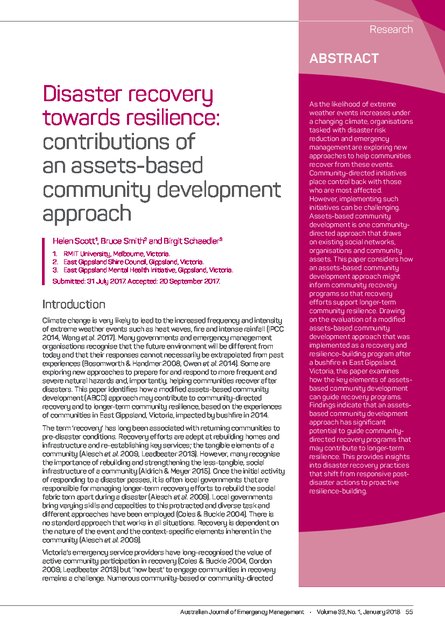
This paper considers how an assets-based community development approach might inform community recovery programs so that recovery efforts support longer-term community resilience. Drawing on the evaluation of a modified assets-based community development approach that was implemented as a recovery and resilience-building program after a bushfire in East Gippsland, Victoria, Australia, this paper examines how the key elements of assets-based community development can guide recovery programs. Findings indicate that an assets-based community development approach has significant potential to guide community directed recovery programs that may contribute to longer-term resilience. This provides insights into disaster recovery practices that shift from responsive post-disaster actions to proactive resilience-building.
As the likelihood of extreme weather events increases under a changing climate, organisations tasked with disaster risk reduction and emergency management are exploring new approaches to help communities recover from these events. Community-directed initiatives place control back with those who are most affected. However, implementing such initiatives can be challenging. Assets-based community development is one community-directed approach that draws on existing social networks, organisations and community assets.